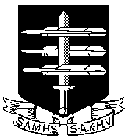

 The South African
The South African
by Captain Ivor C. Little
Way back in 1921 a wealthy Durban stevedore named Mr T B Davis felt that he wanted to do something significant, in memory of his son Howard who had been killed at Thiepval on the Somme in World War 1. Howard was slated to follow in his father's footsteps in a maritime career and had been sent to the famous British cadet training ship HMS Worcester before the war intervened. T B Davis thus deemed it appropriate to remember his son by donating a similar ship to South Africa. It must be remembered that this was in the golden age of sea travel and that there was then a great demand for promising young lads to be trained as future ships officers.
An obsolete Royal Navy light cruiser, HMS Thames, was purchased by Davis and sailed out to South Africa by a crew of Sea Cadets, renamed General Botha in honour of the then Prime Minister of the Union, and brought into use as a cadet training ship. In the minutes of the inaugural meeting of the Board of Control, it was decided that the training given was to be of such a high standard that the General Botha would "become a name amongst seafaring men".
Over the next few decades this was proven true as its graduates fanned out as deck officers across the oceans of the world. During World War II the General Botha had the highest number of military awards per capita than any other school in the then British Empire. This included alumni such as the fighter ace "Sailor Malan" and bomber VC Jack Nettleton. Up to the time of its closure in 1987 the General Botha had produced four Chiefs of the South African Navy (with streets named after them in Rosebank), a clutch of admirals, civic leaders such as Mayor Oberholzer of Johannesburg, leading shipping figures and businessmen and, more recently, Captain Nick Sloane the salvor of the Costa Concordia, and the captain of the largest container ship in the world (for this week at least, until the next one is built).
The General Botha was moved off the ship and ashore to Red Hill during World War II as her mooring in False Bay off Simon's Town was considered unsafe, because of the risk of submarine attack. At the end of the war it was moved to Gordon's Bay, hence the anchor and GB above the village, and in 1966 it was moved to Granger Bay in Cape Town. It closed during 1987 because of the impact of air travel and containerisation, resulting in a lower demand for cadets.
Last year at around this time I happened to casually mention to Lyn Mantle that I had just returned from the 60th reunion of my General Botha class of 1953/54 and was in possession of a video showing us as young lads back then. Lyn picked this up as quick as a flash, exclaiming "Why, that is military history - you must show it to us!" I must say that it came as a bit of a shock to realise that one's own youth is now history, but on reflection I realised that she was, as usual, quite right and the film that I am about to show you is indeed a bit of history.
Those of you who did National Service did basic training for six weeks and thought that you had it tough. General Botha cadets did basics for their full two year course!
The day started at 05h30 with the shrill of a Bosun's pipe and ended at 21h00 with the bugle call "Last Post". In between there was a normal school day plus physical training, sport, parade ground drill, keeping the place clean, prep, morning and evening prayers, maintaining and polishing your kit and last and very much least, meal times ..
To those of you who are parents I want to point out to you that the young lads you are about to see were all aged between 14 and 17, doing Junior and Senior Certificates with nautical subjects. Imagine your own teenager in these situations. You will also see that when these boys left the Botha they were already young officers.
The film you are about to see was shot on an 8mm hand held camera by Chief Cadet Captain (Head Prefect) Barry Cullen in 1953/4 and was professionally reworked by a film studio in California. The background music is by the South African Navy Band.
Curtain-raiser lecture presented to the Johannesburg branch on 12 March 2015
Return to Society's Home page
South African Military History Society / scribe@samilitaryhistory.org